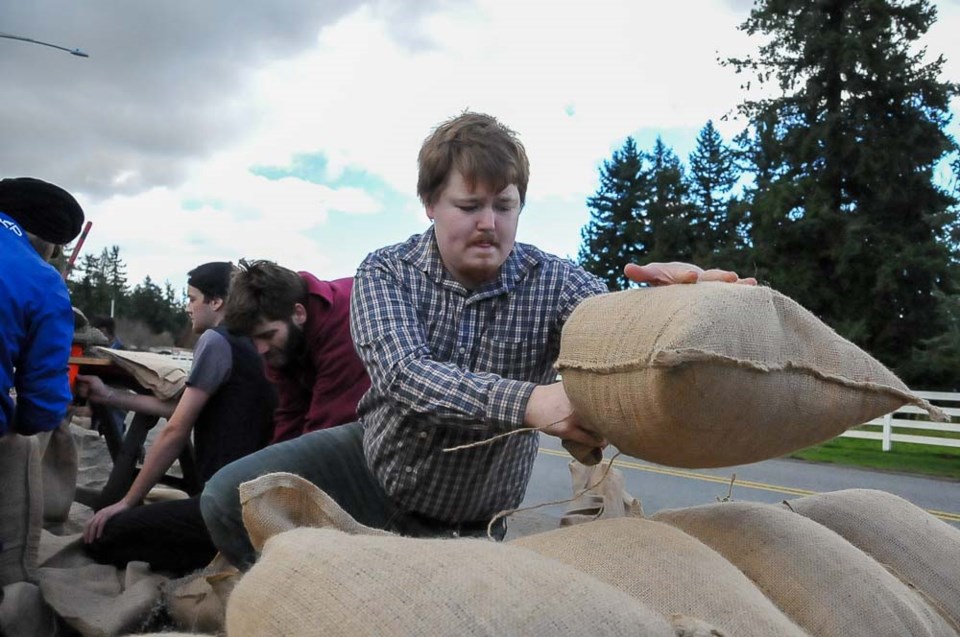An atmospheric river ranking system Environment sa国际传媒 scientists said would be ready by January is now expected to be delayed "some years" after Ottawa said it still required testing.
On Nov. 19, Glacier Media first reported a team of Environment sa国际传媒 scientists were working on a system that in the same way the public receives warnings for hurricanes or tornadoes.
Building on a currently in use, the Canadian version would combine historic rainfall and current forecasting technology to develop local warnings in the lead-up to an extreme event.
With historic flooding paralyzing much of southern sa国际传媒 and another atmospheric river set to hammer the province Tuesday, scientists developing the tool told Glacier Media they were accelerating its release and would be ready by early 2022.
sa国际传媒 Public Safety Minister Mike Farnworth later confirmed representatives with Environment sa国际传媒 told him the system would be ready by early January of next year.
"This will help all of us be prepared better for localized flooding and winds to bigger storm events," Farnworth told reporters. "I want to thank the federal government for taking on this important work."
But over the weekend, a spokesperson for Environment sa国际传媒 walked back those assurances, stating the ranking system wouldn't be ready.
"In the short term, there are no plans for Environment and Climate Change sa国际传媒's (ECCC) meteorological service to formally adopt a multi-level scale on atmospheric rivers in its suite of services to the public," said Minister of Environment and Climate Change press secretary Gabriel Brunet in an email.
Glacier Media contacted the leading researcher on the project, Ruping Mo, but was informed scientists on the project were no longer permitted to speak to the media.
"Environment and Climate Change sa国际传媒 currently has a media policy that requires all AR (atmospheric river) media requests be sent to media relations," Mo wrote in an email.
The flooding has displaced at least 17,000 people, and hundreds more have been trapped or cut off, and in some cases killed, after debris torrents wiped out highways. But the province, and indeed sa国际传媒, has no ranking system to put such powerful atmospheric rivers into context.
Matthias Jakob, a professional geoscientist at BGC Consulting and UBC adjunct professor, said he helped spawn the idea and consulted on its development for 18 months.
Jakob said climate change is only expected to make such historic floods more common in the coming decades. In a recently published study, Jakob found parts of southern sa国际传媒 could see between now and 2080 — a 300 per cent increase.
"Back in 2009, we had believed that climate change would have a quite modest effect on landsliding — maybe an increase landslide frequency of 10 per cent or so," he said. "Of course, a change from 10 per cent to 300 per cent is quite profound."
At the high end, Jakob said the province could see storms bringing 500 millimetres over 48 hours, more than double the rainfall that paralyzed sa国际传媒 in the first extreme rainfall event.
"Atmospherically, it's possible. It's not out of the question," said Jakob. "The sky's the limit for one of these superstorms."
Mo previously told Glacier Media that the atmospheric river ranking system would give emergency planners, meteorologists and the public useful information to manage personal risk during heavy rainfall events.
The system, which is based on past rainfall data and future modelling, starts at AR1. That's where TV networks and the press might start warning drivers to be careful of puddles on roads. At AR5, highly destructive "superstorms" would directly affect over 300,000 people and create havoc over a very large area, according to one risk matrix Jakob has put forward.
"Our scale is based on what is the impact, not just the strength of the atmospheric river," Mo said in a previous interview before the media policy change.
At the time, Mo acknowledged the ranking system was still in an experimental stage and had some bugs that needed to be worked out. But he also said pushing its release forward was a priority given the recent flooding.
Nine days later, Environment sa国际传媒's Gabriel Brunet said in an email that "all new products must undergo rigorous evaluation designed to ensure their validity, utility and reliability," and that "This is essential for public safety."
When asked why Environment sa国际传媒 told Minister Farnworth the ranking system would be released in January, Brunet could not provide an answer.
Questions over when the ranking system would be ready for a public release were transferred to Environment sa国际传媒's media relations department.
It will take "some years" to integrate the ranking system into Environment sa国际传媒's operational weather models, said spokesperson Samantha Bayard.
Farnworth's office was not immediately available for comment.
Jakob said he hopes Environment sa国际传媒 will reconsider launching an experimental version of the ranking system as soon as possible.
"The one thing I hope comes out of this catastrophe is resources," he said. "It's something we obviously desperately need."
With files from Brent Richter, North Shore News




